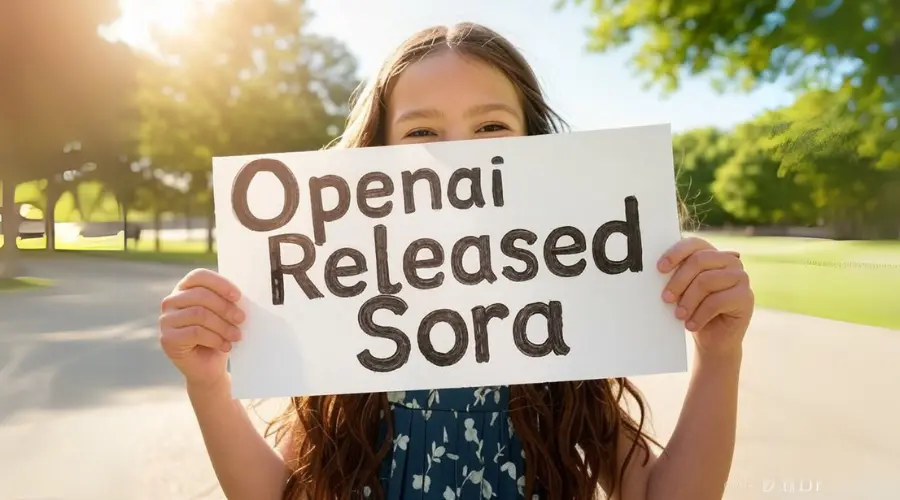Introduction
Today, on December 9, 2024, OpenAI has taken a significant leap forward in the realm of artificial intelligence with the public release of Sora, its much-anticipated AI video generator. This tool has been the talk of the tech community since its initial tease earlier this year, promising to revolutionize how we create and interact with digital video content. Let’s delve into what Sora brings to the table, its capabilities, limitations, pricing, and how it’s being received by early users.
What is Sora?
Sora is OpenAI’s latest innovation in the generative AI space, specifically designed for creating video content from text promptas. Unlike its predecessors, which focused on text or image generation, Sora marks OpenAI’s entry into dynamic video creation, aiming to blend creativity with technology in a way that’s accessible to both professionals and enthusiasts.
Key Features of Sora
- Text-to-Video Conversion: Users can generate videos by simply inputting a text description, transforming words into visual storytelling with high fidelity.
- Extended Video Length: Unlike other AI video tools that might produce short clips, Sora can create videos up to one minute long, providing more creative freedom.
- Realistic Physics and Spatial Awareness: Sora has been trained to understand and simulate the physical world in motion, ensuring that generated videos adhere to real-world physics, making scenes more believable.
- Complex Scene Generation: It can handle scenes with multiple characters, specific motions, and detailed backgrounds, offering a level of detail and complexity not seen before in AI video generation.
- Customizable Camera Movements: Users can dictate camera angles and movements through text, enabling dynamic storytelling akin to professional video production.
Openai’s Sora’s Pricing:
Sora is currently available as a standalone product for Plus and Pro users of OpenAI. Here’s how you can get access:
- Subscription: ChatGPT Plus subscribers ($20/month) receive a modest allocation of 50 video generations monthly, averaging $0.40 per video. The Pro tier ($200/month) offers enhanced benefits with either 500 videos per month in the standard queue or unlimited access in a slower queue, catering to different user needs.
How to Access Sora?
- Platform: It’s accessible through it’s official website https://sora.com/. Users can leverage the power of Sora directly from their existing accounts.
Limitations of Sora
While groundbreaking, Sora isn’t without its limitations:
- Physics Simulation: Despite advancements, complex physics simulations can still be challenging, leading to occasional inaccuracies in how objects interact within the video.
- Consistency Over Time: Long videos might show inconsistencies in character behavior or scene elements over time, as maintaining continuity is complex for AI.
- Bias and Ethical Concerns: Given its training data, Sora might inadvertently reflect biases present in the data. OpenAI has implemented safeguards, but the issue remains a point of vigilance.
- Content Restrictions: There are restrictions on generating content involving violence, hate speech, explicit material, or unauthorized use of celebrity likenesses.
User Reviews and Feedback
Early adopters have shared mixed but mostly positive feedback:
- Creativity Boost: Filmmakers and content creators have praised Sora for its ability to quickly prototype ideas, significantly speeding up the creative process.
- Learning Curve: Some users noted that crafting effective prompts requires skill, suggesting there’s a learning curve to fully harnessing Sora’s capabilities.
- Quality of Output: While the quality is generally high, users have pointed out that the output isn’t always perfect, particularly with more abstract or complex scenes.
Future Implications
Sora’s release could redefine numerous industries:
- Film and TV: From indie filmmakers to major studios, the ability to prototype scenes or generate background elements could cut costs and time significantly.
- Education: Educational content can become more interactive and visually appealing, potentially increasing engagement.
- Gaming: Game developers might use Sora for creating dynamic cutscenes or in-game visuals, reducing development times.
FAQ
Can anyone use Sora? Currently, access to Sora is limited to those with a ChatGPT Pro & Plus subscription, which costs $200 & 20$ per month.
How long can videos generated by Sora be? Videos can be up to one minute in length, which is a significant step up from previous AI video tools.
Is there a free trial for Sora? As of now, OpenAI has not announced any free trial for Sora. The access is tied to the Pro subscription.
Can Sora generate videos with real people? Sora avoids creating videos that mimic specific real people to prevent misuse, particularly concerning privacy and consent.
What about copyright for videos made with Sora? Videos generated by Sora are tagged with metadata indicating they’re AI-generated, which helps in managing copyright issues.
Conclusion
OpenAI’s Sora represents a monumental step in AI-driven content creation, offering tools that blend creativity with technological prowess. While it has its limitations, the potential applications across various sectors are vast. As Sora becomes more embedded in daily professional workflows, we can expect to see an evolution in how digital content is created, shared, and consumed. This tool not only challenges creators to think differently about production but also invites us all to witness the dawn of a new era in digital storytelling.
With the release of Sora, OpenAI continues to push the boundaries of AI, making it clear that the future of content creation is not only in the hands of technology but also in the imagination of those who wield it.
For those keen on diving into this new wave of AI video generation, keep an eye on OpenAI’s updates and community feedback, as they will shape how Sora evolves. This is indeed a thrilling time for tech enthusiasts, content creators, and anyone interested in the intersection of art and artificial intelligence.
